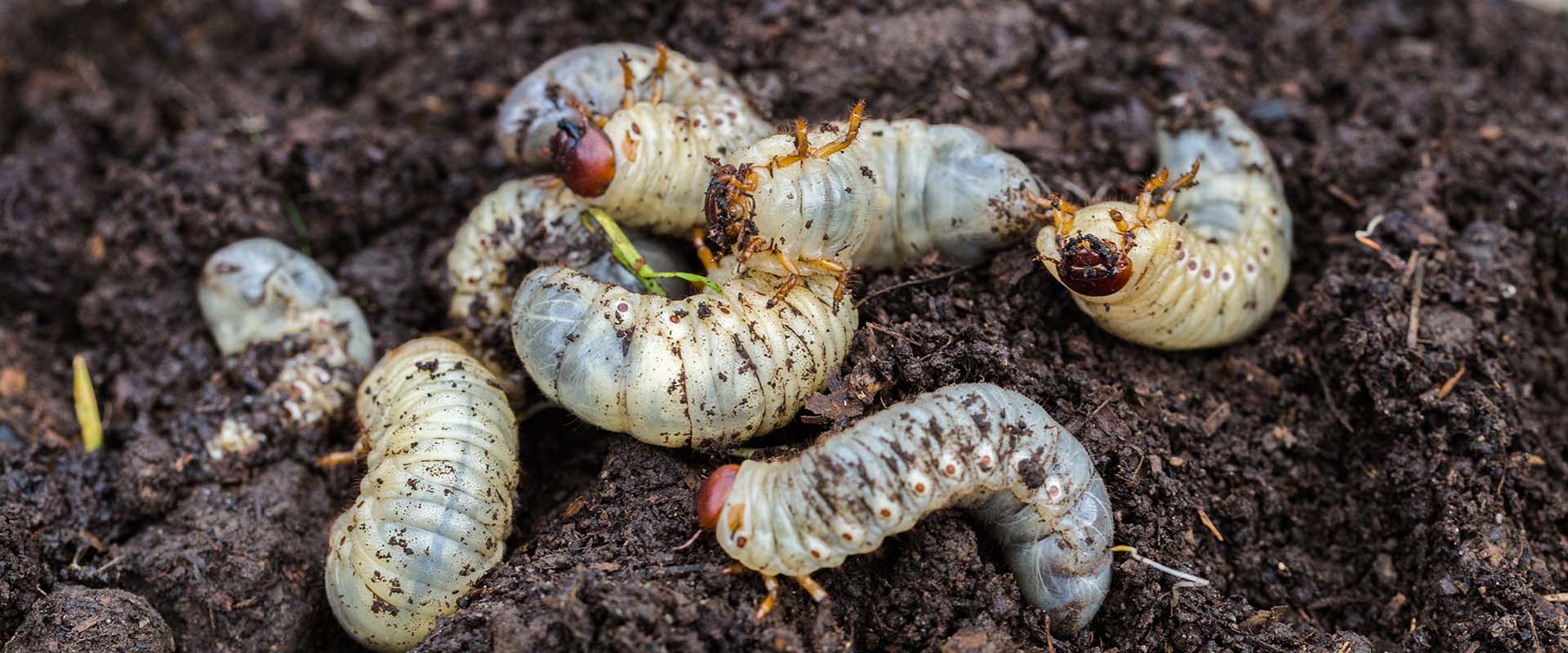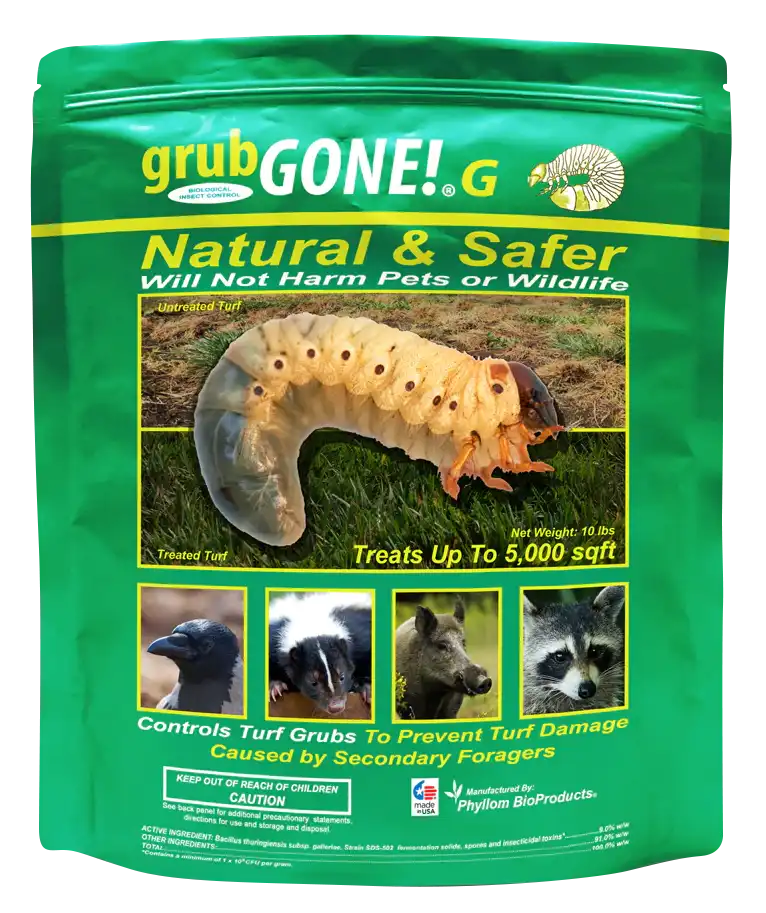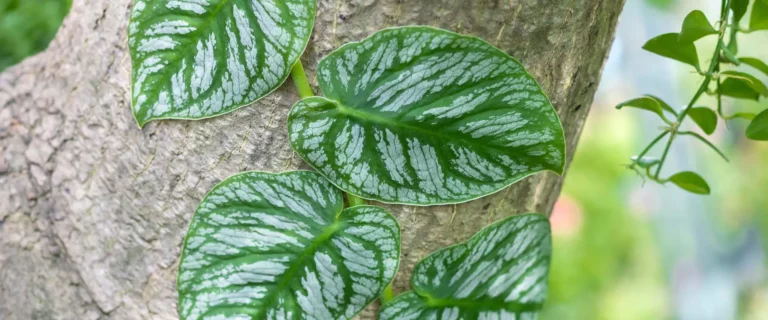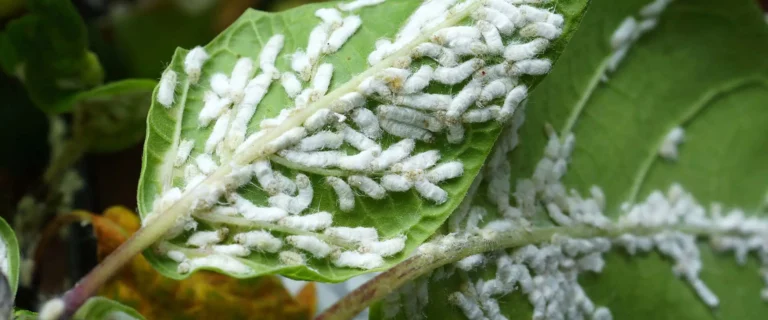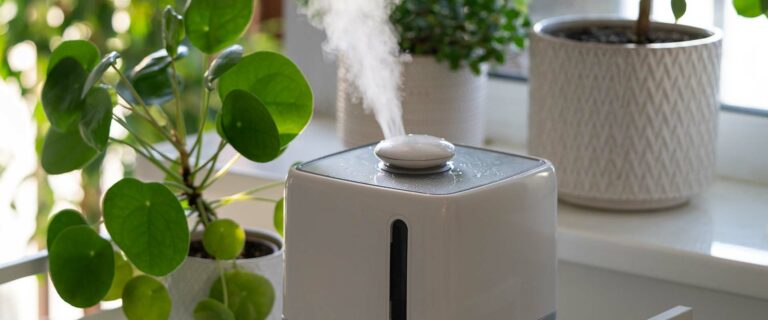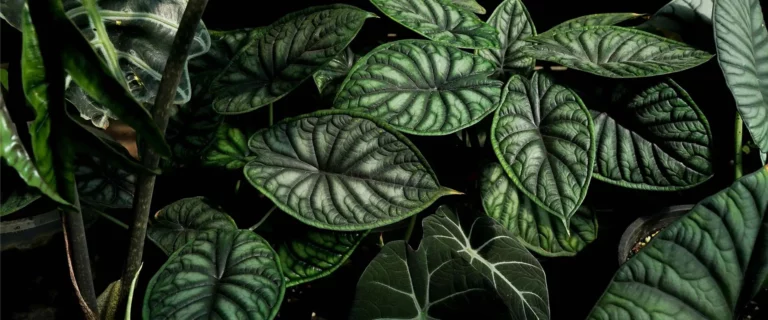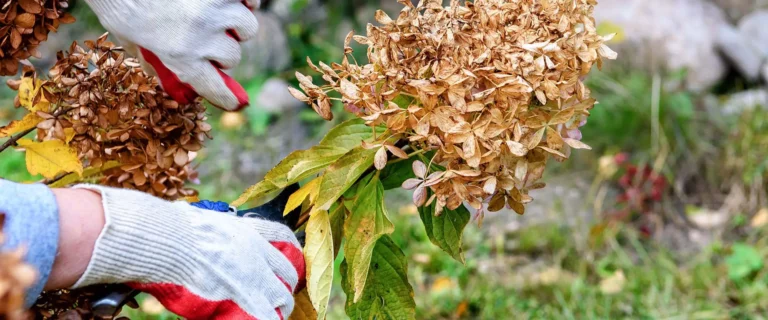Ahhh, grubs. They are no friend to gardeners, although they are a favorite snack of many animals. Grubs are the worm-like larvae of Japanese beetles and other beetle species that eat grass roots. They also cause patches of your lawn to turn brown and die. But it’s not just your lawn. They disturb root systems of the plants in your garden beds causing them to get stressed, stunt their growth or even kill them.
Here in Connecticut, there are two times during the year when grubs are actively feeding in your lawn: mid-to-late spring and late summer/early fall.
The Life Cycle of the Grub
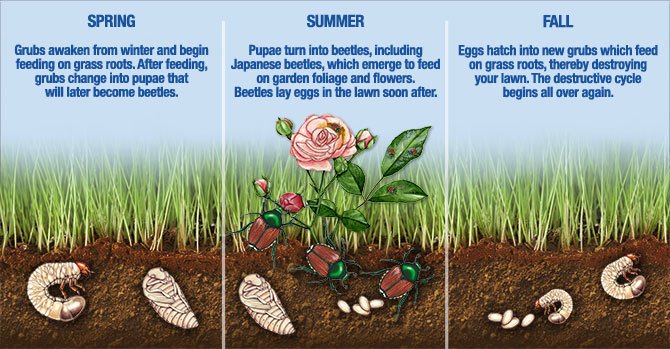
Grubs burrow deep in the soil and hibernate during the winter months. In the spring, when the soil temps get warm enough, the grubs work their way up through the soil and feed on your grass roots.
By late spring and early summer the grubs pupate and emerge from the soil as adult Japanese, Oriental or Asiatic beetles. The beetles will mate during the summer and females can lay up to 60 eggs in the soil, which hatch into grub larvae within 10 days and immediately start feeding on grass roots.
After their summer and early-fall feeding, they begin their descent into the soil to sleep for the winter, where the cycle will start all over again in the spring.
How do you know if you have them?
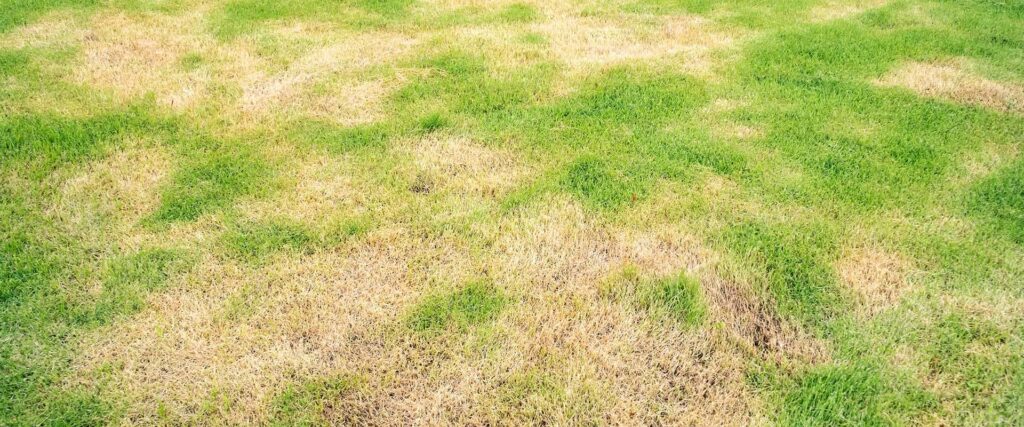
You’ll notice yellowing or brown, irregular patches in your lawn, usually in the sunniest or warmest places.
In fact, you can easily peel back these dying patches of grass and see the little stinkers responsible for ruining your nice green grass.
Another tell-tale sign is if you notice critters such as skunks or raccoons hanging about; they love to dig up those grubs and eat them!
Same with birds — they’ll leave small, pencil-sized holes in the lawn after picking out the delectable grub morsels.
What can you do to get rid of grubs?
Your friends here at The Gardener’s Center recommend using an organic biological control such as grubGONE! rather than a broad spectrum chemical treatment.
grubGONE! is a non-toxic, eco-friendly option that won’t harm people, pets or other wildlife. It directly treats only the grubs themselves with targeted control and is not harmful to beneficial soil microorganisms, insects and pollinators. Important! When you use harsh chemical options, you are causing harm to your much needed soil microbes and other organisms, insects and, of course, our helpful pollinators.
If you have a grub issue, don’t hesitate to stop in to The Gardener’s Center. We have the products and the details you need on how and when to apply an organic insecticide.

